Key Terms & Concepts
This toolkit explores the importance of diversity, equity and inclusion. The terms cut across all facets of life — from access to education, to fairness in pay and salaries, to career advancement, and even homeownership. But what exactly do we mean when we say diversity, equity and inclusion?
When discussing issues of diversity, equity and inclusion, it is important to understand the nuances of the language we use. In this resource, we will go over some key terms and concepts to aid you in your DEI journey.
Terms and concepts covered in this resource:
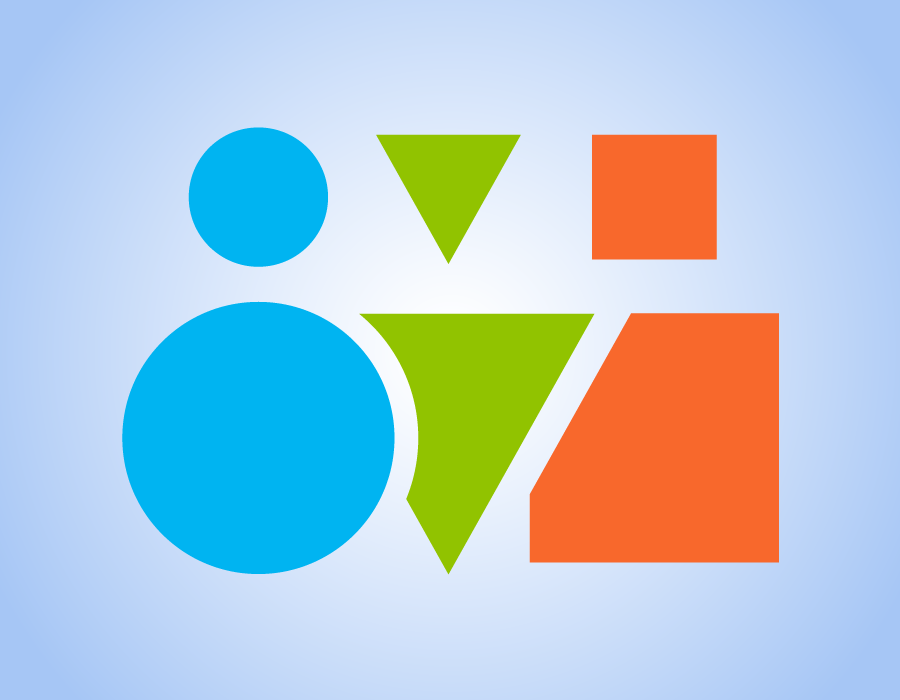
Diversity
Definition of diversity
1 : the condition of having or being composed of differing elements : variety especially : the inclusion of different types of people (such as people of different races or cultures) in a group or organization programs intended to promote diversity in schools
2 : an instance of being composed of differing elements or qualities : an instance of being diverse a diversity of opinion
Source: Merriam-Webster Dictionary
Variety. That’s what diversity means in essence. But it also means that recognizing what makes us different and unique is important and, without taking diversity into consideration, we run the risk of excluding some individuals .. Failing to incorporate diversity into what we do at AAUW – not just our membership, but throughout the organization– and aligning it to our organizational mission and goals can cause a catastrophic error that we may not be able to recover from.
As an organization, we are realistic: We don’t expect all our members to read a few definitions and become experts in diversity, equity and inclusion. So these resources are meant as a guide to help answer some basic questions and to share additional resources that can be discussed and viewed as part of branch meetings, state conferences and the national conference. We hope to help build your diversity knowledge, equip you with the right tools and develop the capabilities to implement these actions.
Readings:
- Print Materials:
- Carr-Ruffino, N., Managing diversity: People skills for a multicultural workplace (7th ed.) Boston: Pearson, 2006.
- Cox, T. Jr. & Beale, R. L., Developing a competency to manage diversity. San Francisco: Berrett-Koehler Publishers, Inc., 1997.
- Henry III, W., “Beyond the melting pot.” Time (April 9, 1990): 28–31.
- Ho, L., Cross-cultural swinging: A handbook for selfawareness and multicultural living. Canada: Pacific Asia Press, 1990.
- Stewart, C., Sexually stigmatized communities: reducing heterosexism and homophobia. Thousand Oaks, CA: Sage Productions, 1999.
- Straight Talk About Disability brochure. Chicago: Rehabilitation Institute of Chicago, 1998.
- Tannen, D., You just don’t understand: Women and men in conversation. New York: Ballantine Books, 1990.
- Tatum, B. D., Why are all the Black kids sitting together in the cafeteria? New York: Basicbooks, 1997.
- Thomas, R. R. Jr., Beyond race and gender. New York: AMACOM, 1991.
- Thomas, R. R. Jr., Building a house for diversity. New York: AMACOM, 1999.
- Tiedt and Tiedt, Multicultural Teaching (4th ed.). Boston: Allyn & Bacon, 1995.
- Smith, B., Miller; A. W., Archer, T., and Hague, C. Working with Diverse Cultures Factsheet. CDFS-14. This is a publication of Ohio State University Extension.
- Websites:
Activities:
- For Students:
- For the Workplace:
Videos:
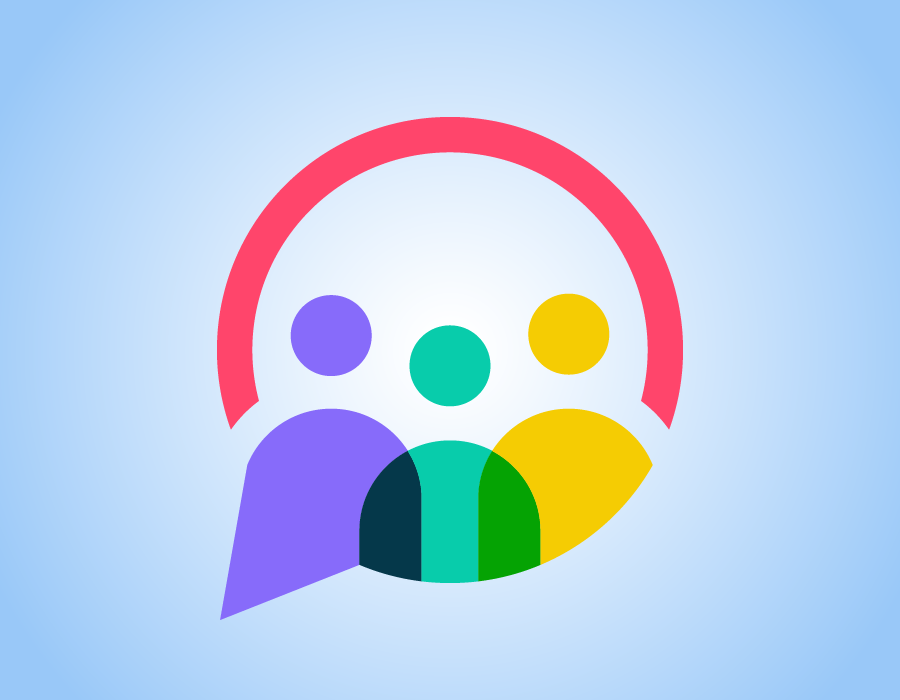
Inclusion
Definition of inclusion
1 : the act of including : the state of being included
2 : the act or practice of including and accommodating people who have historically been excluded (as because of their race, gender, sexuality or ability)
Source: Merriam-Webster Dictionary
Diversity is only the beginning, and it isn’t enough. To create truly diverse spaces, those spaces also need to be inclusive, where all parties feel welcomed, appreciated and respected — and have full access to all resources and can contribute to AAUW’s success.
As diversity advocate Verna Myers once said, “Diversity is being invited to the party, and inclusion is being asked to dance.” If you don’t have both, neither works.
Diversity vs. Inclusion
Diversity refers to characteristics, the dimensions that make each of us unique. Inclusion entails behaviors and actions that make us feel welcomed or not. An environment that creates a sense of belonging, where everyone feels welcomed and included, is essential for the success of diversity efforts.
To be truly inclusive, we often have to change the culture — and culture shifts can make people uncomfortable or give the sense that they are losing something. But that is absolutely not the case. In fact, the exact opposite is true: Research suggests that in environments where people feel supported, welcomed, respected and valued are actually more productive; everyone feels a greater connection to the organization’s mission.
Inclusion vs. Belonging
So, if diversity means the characteristics that make us unique, and inclusion refers to behaviors and actions, then what is belonging? And why is it important?
Belonging is feeling like you are a part of something, that you actually you matter. It isn’t necessarily about being liked — but rather being needed.
AAUW needs all of these things together — diversity, inclusion, and belonging — for our branches to continue to grow and thrive.
Readings:
- Print Materials:
- Brown, Jennifer. Inclusion: Diversity, the New Workplace and the Will to Change. Hartford, Connecticut: Publish Your Purpose Press, 2017.
- Jana, Tiffany. Subtle Acts of Exclusion: How to Understand, Identify, and Stop Microaggressions. Oakland, California: Berrett-Koehler Publishers, 2020.
- Tatum, Beverly Daniel. “Why Are All the Black Kids Sitting Together in the Cafeteria?”: and Other Conversations about Race. New York, New York: Basic Books, 2017.
- Winters, Mary-Frances. We Can’t Talk About That At Work!: How to Talk about Race, Religion, Politics, and Other … Polarizing Topics. New South Wales, Australia: Read How You Want, 2017.
- Websites:
- To Build an Inclusive Culture, Start with Inclusive Meetings
- Annotated listing of readings on various topics around inclusion (University of Michigan)
- Recommended resources on inclusion (The Heller School for Social Policy and Management at Brandeis University)
- DEI reading list (University of Missouri-Kansas City)
- Downloadable reading list
Resources on Language Usage:
- ADL Guidelines for Achieving Bias-Free Communication
- American Philosophical Association Guidelines for Non-Sexist Use of Language
- Conscious Style Guide
- GLAAD Media Reference Guide, 10th Edition
- Inclusive Language in Technology Fields (also contains an explanation of terms)
- LGBTQ Do’s and Don’ts (The Safe Zone project provides many resources related to inclusiveness for LGBTQ individuals)
- Linguistic Society of America Guidelines for Inclusive Language
- National Lesbian & Gay Journalists Association Stylebook
Activities:
- For Students:
- Student Activities to Promote Diversity, Inclusion, and Empathy
- Diversity & Inclusion Activities (West Virginia University)
- Social Inclusion Icebreakers and Connection Activities
- 50 Tips and Tricks to Facilitating a More Inclusive Classroom
- Inclusivity in the Classroom (University of Florida)
- Inclusion/Exclusion Awareness Activity
- For the Workplace:
Videos:
- Inclusion Starts with I
- Inclusion Makes the World More Vibrant
- Inclusion Begins with You
- It’s in Your Hands – Inclusion
- So You Want to Learn About Inclusion
- Inclusion Over Diversity
- Inclusion
- Diversity and Inclusion
- Cultivating a culture of inclusion
- Why belonging at work matters
- Diversity | Short Film

Equity
Definition of equity
1a : justice according to natural law or right specifically : freedom from bias or favoritism
b : something that is equitable
Source: Merriam-Webster Dictionary
Every AAUW member should understand what we mean by equity. After all, we are the nation’s premier organization fighting for gender equity. We fight to narrow the pay gap for women, champion equal opportunity for women in education, and work together to support laws and policies that enable women’s success. So you may wonder why we have a resource on a term we’re all familiar with: Because even with all our understanding, there’s still something we can learn.
Equity vs. Equality
Although these two words have the same root, they don’t mean the same thing. They are often used interchangeably, even though they differ in meaning. Equality means everyone gets the same access to — or amount of — something. Equity, by contrast, is about everyone having equal access to what they need to be successful. And those needs can be quite different.
You may be familiar with Angus Maguire’s images of three children standing on boxes to watch a ballgame over the fence. In the first image, each of the children has one of the same-sized box: equality. However, because the children are different heights, the shortest child still can’t see. In the second image, the tallest child, who doesn’t need a box to see over the fence, gives theirs to the shortest of the children, enabling all of the children to see over the fence: equity! The key difference here is fairness in the distribution of resources (the boxes) to each child enabling them to all achieve their goal (seeing the game).
Readings:
- Print Materials:
- Bohnet, Iris. What Works: Gender Equality by Design. Cambridge, Massachusetts: The Belknap Press of Harvard University Press, 2016.
- Logan, David, John Paul King, and Halee Fischer-Wright. Tribal Leadership. London, UK: Collins, 2008.
- Putnam, Robert D. Bowling Alone: the Collapse and Revival of American Community. New York, New York: Simon & Schuster, 2020.
- Schniedewind, Nancy, and Ellen Davidson. Open Minds to Equality: a Sourcebook of Learning Activities to Affirm Diversity and Promote Equity. Milwaukee, Wisconsin: Rethinking Schools, 2014.
- Badgett, M. V. Lee. The Economic Case for LGBT Equality: Why Fair and Equal Treatment Benefits Us All. Boston, Massachusetts: Beacon Press, 2020.
- Websites:
Activities:
- For Students
- Cultures of Dignity: Equity and Equality Lesson
- Fairness and Equality: The Band-Aid Lesson
- How are Equity and Equality Different?
- Equality and Human Rights Commission – Lesson Plan Ideas
- For Workplaces
Videos:
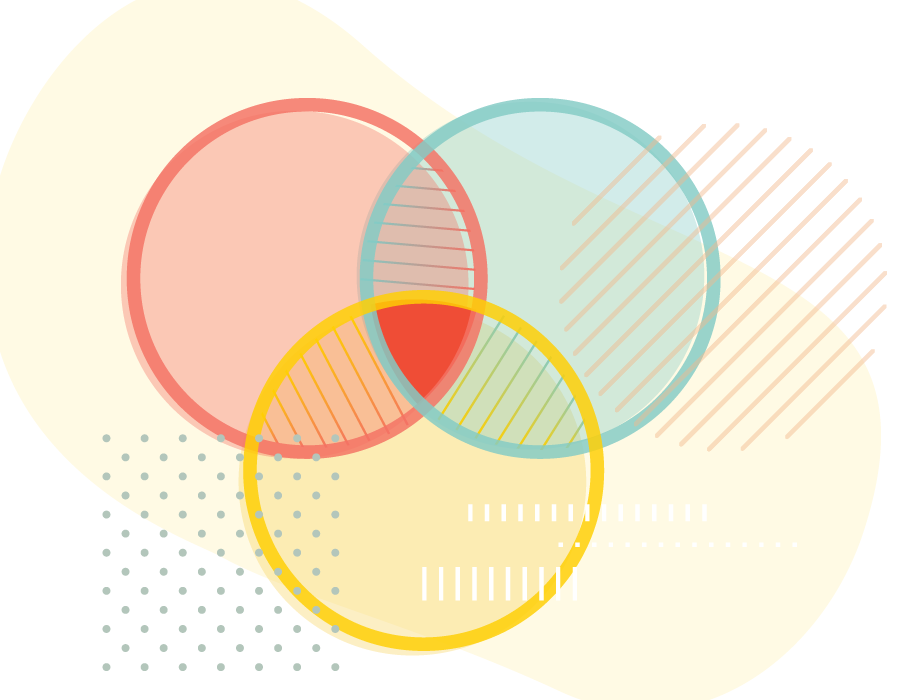
Intersectionality
Definition of intersectionality
1: the complex, cumulative way in which the effects of multiple forms of discrimination (such as racism, sexism, and classism) combine, overlap, or intersect especially in the experiences of marginalized individuals or groups
Source: Merriam-Webster Dictionary
People yearn to be their true selves at work, at school, in their lives in general — we all want to be able to embrace our full identity. But to do that, we have to understand the concept of intersectionality because who you are is a combination of many different identities. The effects of which are not always the same in every circumstance.
Legal scholar Kimberlé Crenshaw originally coined the term intersectionality in her work Mapping the Margins. She pointed out that scholars often look at outcomes for women or outcomes for African Americans, but never look at what happens to African American women whose lives are impacted by the ways these multiple sources of oppression interact. And with that a new way of examining the experiences of people with overlapping dimensions of diversity was born.
Understanding intersectionality gives us a way of understanding the cumulative effect of discrimination and oppression on people. That’s not to say that one person’s oppression is greater than another’s; it’s simply a way of recognizing that our experiences may not be the same because inequality is a complex phenomenon.
Let’s illustrate the concept of intersectionality with an example familiar to AAUW members: Pay equity. We are all aware that men and women are paid unequally for equal work: on average, women make 82 cents for every dollar that a white man makes. But did you know that moms make 70 cents on that same dollar? Or that Latinas make just 55 cents? These are just a few examples of intersectionality and how parental status or ethnicity intersect with gender to impact pay equity.
Readings:
- Print:
- Diversity and Inclusion Resources (Harvard University)
- Latina/Latino/Latinx LGBT Experiences Booklist
- 6 Books to Read to Better Understand Intersectionality
- Intersectionality 101: A Reading List
- Intersectionality Reading List
- 27 Things to Read If You Care About Women of Color
- Intersectionality Book List
- Intersectional Pride Book List
- Latina/Latino LGBT Bibliography
- Intersectional Women’s History Month Reading List
- 10 Books on Intersectional Feminism
- Websites
- Intersectionality – Approaching Diversity and Inclusion Through a Holistic Lens
- The Intersectionality Wars
- What is Intersectionality and Why is it Important
- Intersectionality 101
- Why Intersectionality Matters Even More in 2020
- Intersectionality for Beginners
- What is the Road to Inclusion Were Really an Intersection
- Teaching at the Intersections
- Kimberlé Crenshaw Instructors Guide
Activities:
Videos:
- Intersectionality
- Intersectionality 101
- Kids Explain Intersectionality
- This Video Breaks Down the ABCs of Intersectionality
- 10 Intersectional Feminist Films
- Top 10 Films that Break Gender and Racial Stereotypes
Additional Resources:
- Check out this TED talk by Kimberlé Crenshaw (who coined the term “intersectionality”)
- On your quest for more intersectional viewpoints, check out this list of podcasts
- Listen to women share their thoughts on intersectionality here and here
- Intersectionality: Definitions, Videos and Links
- Intersectionality
- Creative Equality Toolkit
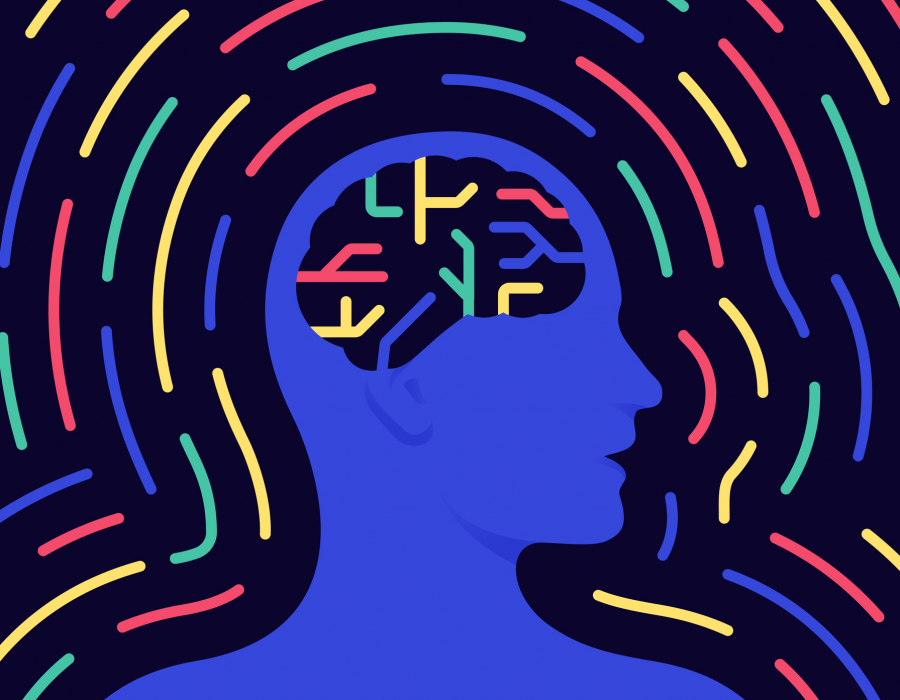
Neurodiversity
Definition of neurodiversity
1: individual differences in brain functioning regarded as normal variations within the human population
2: the concept that differences in brain functioning within the human population are normal and that brain functioning that is not neurotypical should not be stigmatized
3: the inclusion in a group, organization, etc. of people with different types of brain functioning
Source: Merriam-Webster Dictionary
Neurodiversity is often most often used in association with autism but is inclusive of other neurological categorizations such as ADHD, dyslexia, etc. The neurodiversity movement is one of inclusivity, recognizing and embracing different ways of brain function and not looking at differences as a problem but rather an opportunity.
Websites:
- Neurodiversity Hub
- Neurodiversity in the Workplace
- Stanford Neurodiversity Project
- Exceptional Individuals
Articles:
- Great Places to Work, “How to Build and Support Neurodiversity in the Workplace.”
- Harvard Business Review, “Neurodiversity as a Competitive Advantage: Why you should embrace it in your workforce” by Robert D. Austin and Gary P. Pisano From the Magazine (May–June 2017).
- Psychology Today. Neurodiversity: The Movement.
Videos:
- Genazzano Institute of Learning and Brain Sciences:
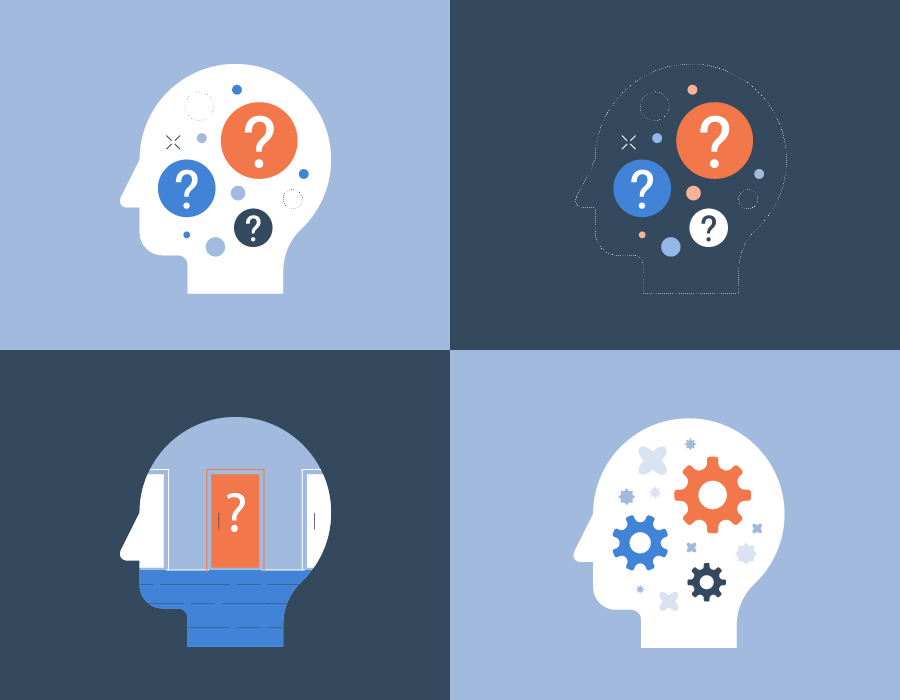
Unconscious Bias
Definition of unconscious
1 : not marked by conscious thought, sensation, or feeling
2 : not knowing or perceiving : not aware
3 : not consciously held or deliberately planned or carried out
Source: Merriam-Webster Dictionary
Definition of bias
1 : an inclination of temperament or outlook especially : a personal and sometimes unreasoned judgment : prejudice
Source: Merriam-Webster Dictionary
We all know what overt biases are, but did you know that we all have unconscious biases, too? These are biases that might be inconsistent with our values, that we would never knowingly act on and that we weren’t even aware we had? And having them doesn’t make us racist or sexist or homophobic, for example. Still, becoming aware of them is the first step to ridding ourselves of them. So, let’s understand more about unconscious bias.
The easiest way to understand unconscious bias is figure out why it happens. At any given, moment we are bombarded with lots of different information, but our brains can only process a fraction of that information at once. So, to help us try and make sense of the world around us, our brain uses short cuts. Those short cuts are shaped and informed by our experiences. But, because sometimes the things we need to make sense of are unfamiliar, bias can enter the picture.
Let’s look at an example. Below is an image, what do you see? Triangles, circles? How many?

This is the Kanizsa Triangle. Most people see a solid white triangle pointing upwards, an inverted triangle pointing downwards, and a set of black discs. But the fact is, none of these shapes are actually present in the figure. (In fact, this image is of “pac-men” and V’s, not triangles and circles). This is an example of our unconscious mind using familiar information to try and make sense of what it sees, because in the absence of complete information, our mind needed to rely on something to help us figure it out. That is unconscious bias! Perhaps now you can see why we said earlier that because you have it doesn’t make you bad inherently and once you realize it exists you are empowered to do something about it.
So, what can you do?
- Self-awareness is the first step
- Create safe spaces to have open discussions about the biases you have
- Increase your contact with people who are dissimilar
- Set realistic expectations
We’re not going to be able to change our unconscious mind over night, but with some hard work and dedication, we will be able to make progress. Only when we confront our biases are we able to truly recognize the value diversity brings to an organization like AAUW. It’s important for our continued growth and sustainability as an organization to make a concerted effort to be inclusive and create spaces where everyone feels welcome.
Readings:
- Print Materials:
- Websites
- Unconscious Bias (University of California, San Francisco)
- 12 Unconscious Bias Examples and How to Avoid them in the Workplace
- Prince Harry Admits His Unconscious Bias. Can Others Now Acknowledge Their Privilege Too?
- 10 Mindful Ways for Leaders to Beat Their Own Unconscious Biases
- 26 Mini-Films for Exploring Race, Bias, and Identity with Students
- Understanding Bias to Unleash Potential
- Project Implicit (Harvard University)
- Who, Me? Biased?
- Understanding Unconscious Bias
Activities:
Videos:
- Understanding Unconscious Bias
- How to Outsmart Your Own Unconscious Bias
- How to Check Your Unconscious Bias
- Our Hidden Biases
- TED TALKS LIVE Short – Unconscious Bias
- An Introduction to Unconscious Bias
- How We Make Decisions and How Unconscious Bias Affects Judgement
- Blind Spots: Challenge Assumptions
- 4 Steps for Busting Unconscious Bias
- Addressing Unconscious Bias
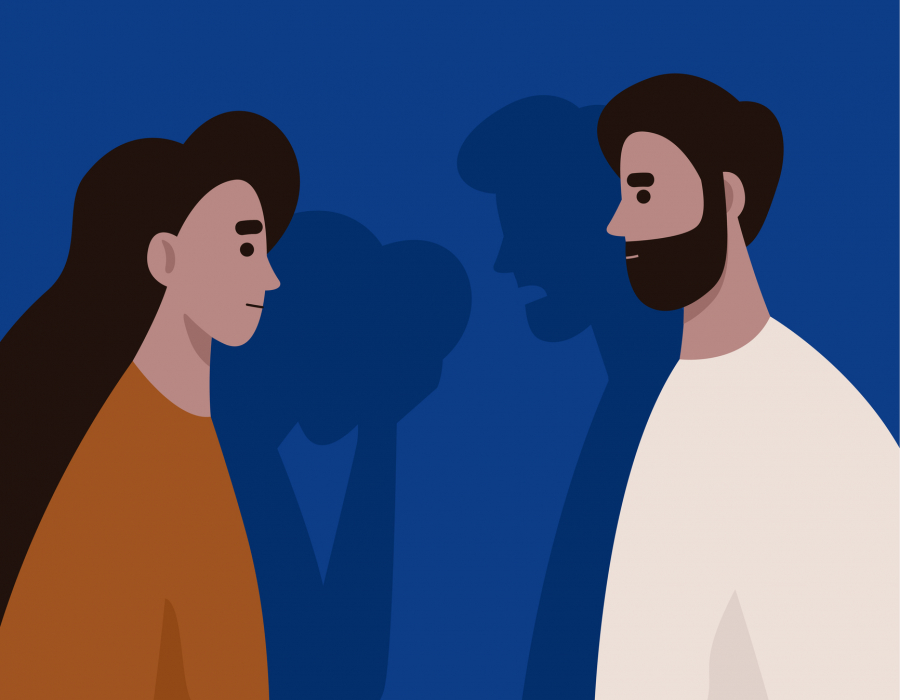
Microaggression
Definition of microaggression
1 : a comment or action that subtly and often unconsciously or unintentionally expresses a prejudiced attitude toward a member of a marginalized group (such as a racial minority).
Source: Merriam-Webster Dictionary
Microaggressions aren’t exactly the same as a regular insult. While microaggressions are surely insulting, they specifically have to do with a person’s membership in a marginalized group. Microaggressions are based on stereotypes and tied to implicit bias. They are not the same as overt racism, sexism, ableism, homophobia, etc. and so happen often without an intent to harm. However, we know that intent is not the same as impact and microaggressions can have serious negative impacts on those who experience them. So, how do we avoid perpetrating microagressions? Read a common list of microaggressions so that you understand how they may appear in everyday language. Examine your own language and biases. And if someone accuses you of perpetrating a microaggression, listen, don’t get defensive, apologize, and continue to learn and examine your biases so that you don’t make the same mistake.
Books:
- Sue, Derald Wing. Microaggressions in Everyday Life: Race, Gender, and Sexual Orientation. Wiley, 2010.
Articles:
- The importance of understanding microaggressions at work, Rachel Murray for Culture Amp.
- What Are Microaggressions? How to Pinpoint and Stop Them, Career Contessa.
- What is a microaggression? 14 things people think are fine to say at work — but are actually racist, sexist, or offensive, Business Insider.
Videos:
- Understanding Microaggressions, Wisconsin Technical College
- Responding to Microaggressions, Wisconsin Technical College
- How to Respond to Microaggressions at Work, Career Contessa
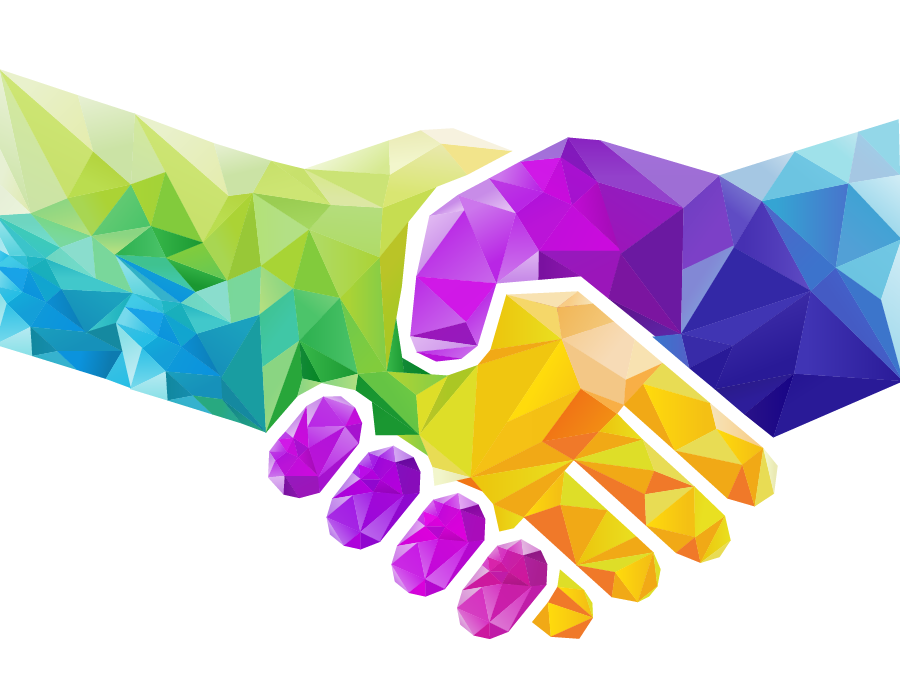
Allyship
Definition of allyship
1: the state or condition of being an ally: supportive association with another person or group
Source: Merriam-Webster Dictionary
Going more in depth, the Anti-oppression Network defines allyship as, “an active, consistent, and arduous practice of unlearning and re-evaluating, in which a person in a position of privilege and power seeks to operate in solidarity with a marginalized group.”
Anyone can be an ally, but it’s not a passive role: It means speaking up and taking action not just claiming the title. Being an ally is consistent work that may not always go perfectly. Mistakes are inevitable, but being open to listening, learning, and doing better is an important part of allyship.
Listening is a vital skill for an ally. Listen with empathy and ask questions to understand different perspectives. Additionally, examining our own perspectives and prejudices is also important to allyship. Everyone has biases; learning about our own can help to mitigate their harmful impacts and can be a step towards unlearning actions that may harm others.
Speaking out about injustices and advocating for change when you recognize unjust treatment of others, even if/when you may not fully understand the struggle, is also part of being an ally. Speaking up might look different depending on the situation, but ideally it also includes amplifying the voices of others who are being oppressed. You are not an ally because you know best; you are an ally because you have privilege, and you are using that privilege to amplify the messages of others who are marginalized.
Readings:
- Print:
- Catlin, Karen. Better Allies: Everyday Actions to Create Inclusive, Engaging Workplaces. United States of America: Better Allies Press, 2019.
- Dunbar-Ortiz, Roxanne. An Indigenous Peoples’ History of the United States. Boston: Beacon Press, 2015.
- Nielsen, Kim E. A Disability History of the United States. Boston: Beacon Press, 2012.
- SAAD, LAYLA. ME AND WHITE SUPREMACY: How to Recognise Your Privilege, Combat Racism and Change the World. S.l.: QUERCUS PUBLISHING, 2021.
- Websites:
- Allyship – The Key To Unlocking The Power Of Diversity (Forbes)
- The Real Work of Being an Ally
- Allyship (vs. Accomplice): The What, Why, and How
- How to Be a Good White Ally, According to Activists
- Salesforce learning module: Trailhead. Equality Ally Strategies
- The University of Kansas. The community ToolBox. Chapter 27, Section 5: Learning to be an Ally for People from Diverse Groups and Backgrounds
- Guide to Allyship
- The Anti-oppression Network
- Allyship.org
- I Weigh Community
- Resources for White Allies
- Save the Tears: White Woman’s Guide
- White Nonsense Roundup
- The Great Unlearn
- Videos:
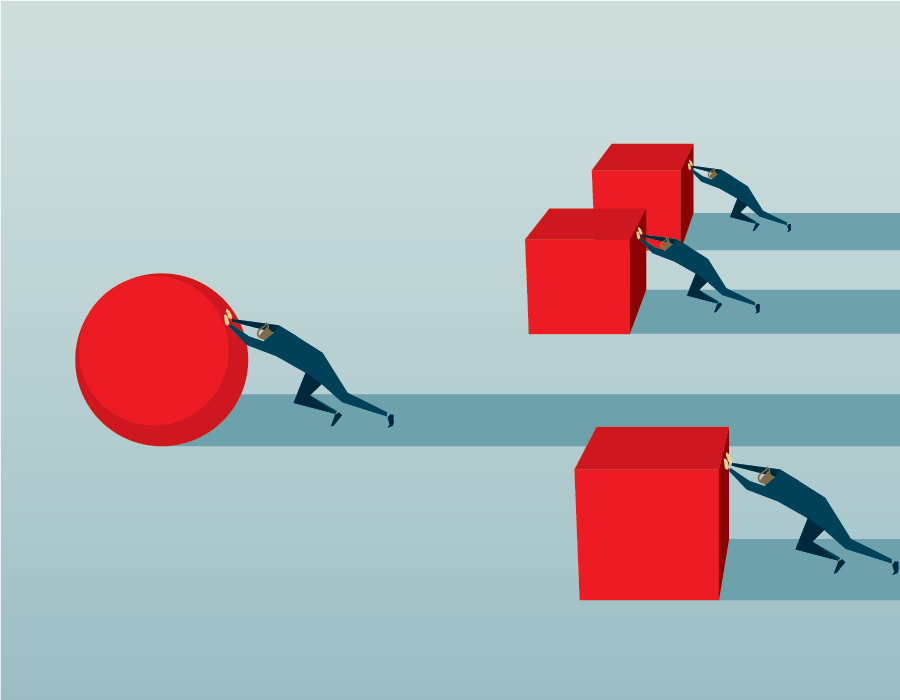
Privilege
Definition of privilege
1: a right or immunity granted as a peculiar benefit, advantage, or favor
Source: Merriam-Webster Dictionary
The notion of privilege is not new; it has been around for many decades. In fact, many of us remember the seminal work from the 1980’s by Peggy McIntosh, White Privilege: Unpacking the Invisible Knapsack, where she identified the privileges she experienced in her life and explored how she and others have benefited. Before that, Black rights activist W. E. B. Du Bois wrote about the phenomena, proving that we have been trying to understand privilege for quite some time. It seems that these days, because we’ve gained some ground in terms of equality, the notion of privilege is no longer applicable. But, in fact, it is. So, let’s be sure we understand what it means and how we can become aware of it.
The “advantages” that privilege provides to some can be based on different dimensions of diversity — the most commonly referenced are those based on race and gender. White privilege, for example, is defined as “inherent advantages possessed by a white person on the basis of their race in a society characterized by racial inequality and injustice.” Can you think of examples of privilege or white privilege? How do these examples affect you and/or your loved ones?
The sense of privilege can also be tied to any aspect of diversity. Other types of privilege may be for straight individuals, men versus other genders, those who belong to a certain religious group, and/or members of a given political party. Examples of these types of privilege include only allowing heterosexual couples to marry and medical care differences and laws founded on one religion (such as anti-abortion laws).
Considering the current state of our nation, it is time to have tough conversations concerning race, bias and privilege. Ideas for starting these conversations can be found in our resource on having difficult conversations. If you don’t know whether you are part of a privileged group, ask yourself what parts of your identity do you think about least. The trait you identify is connected to your sense of privilege.
If you are in a privileged group, it is possible to use your privilege to help others by becoming an ally. Determine what underprivileged people lack or are challenged with and how to best help. Most importantly, be mindful of your actions. You may not mean to speak over others, particularly those you want to support. But, if you speak for them instead of taking their lead, you may cause more damage than good.
If you’re not in a privileged group, be open to having civil yet constructive conversations with those that are privileged. Find collaborative ways to help yourself and those around you. Be active in your community, particularly in voting for legislation and/or candidates that support equality and equity efforts. Awareness of our privilege is necessary to help AAUW be able to grow and thrive as an organization.
Readings:
- Print Materials:
- Websites:
- Understanding Race and Privilege
- What is White Privilege, Really?
- White Privilege: Real or Racist?
- What is White Privilege? The Origins and Meaning of the Term Used Amid Black Lives Matter Debate – and Why It’s Misunderstood
- Understanding White Privilege: 20 Everyday Examples
- White Privilege, Color and Crime: A Personal Account
- The Origins of “Privilege”
- I’m a Black Man with White Privilege. I See How It Distorts America.
- Use Your Everyday Privilege to Help Others
Activities:
- For Students:
- For the Workplace:
Videos:
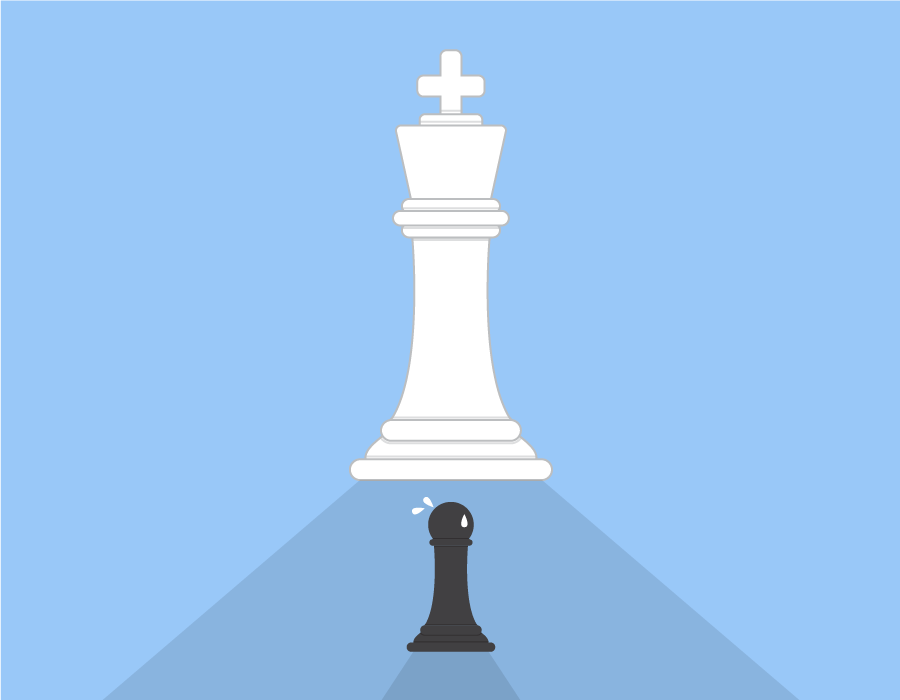
Dismantling White Supremacy
Definition of white supremacy
1 : the belief that the white race is inherently superior to other races and that white people should have control over people of other races. The alt-right is a reactionary conservative movement
2 : the social, economic and political systems that collectively enable white people to maintain power over people of other races
Source: Merriam-Webster Dictionary
When you think of white supremacy, what images that come to mind? Do you think of the 1960’s and the Ku Klux Klan? Or do you recall the Unite the Right rally in Charlottesville, Virginia in 2017? Or the Proud Boys marching to the statehouse in Oregon last summer? One thing we’ve learned in recent years is that white supremacist groups are alive and thriving in America, and we must do something to dismantle them. Let’s start by understanding what we’re dealing with.
White supremacists aim to oppress non-Whites, while telling followers that the white race is superior and deserves wealth, power and privilege. This belief can be traced back to the foundations of the U.S., with the marginalization of Native Americans and the enslavement of Africans and African Americans.
In the U.S., there are numerous white supremacist groups. These range from political entities such as the American Identity Movement (AIM) to internet followers of QAnon, and all the way to groups such as Skinheads and the White Aryan Resistance, who promote violence. A list of white supremacist groups in different states can be found here.
White supremacy has recently entered the conversation of mainstream politics. As witnessed in the 2020 Presidential debate, not outright rebuking white supremacist groups and ideology can lead to further division in the U.S. The deaths of George Floyd, Breonna Taylor and Ahmaud Arbery have further fueled race discussions, protests and riots, specifically between Black Lives Matter leaders and white supremacist groups.
We are certainly capable of disrupting racism within our communities — and this starts with having difficult conversations. Another step is to understand the resources available to fight white supremacy groups. The most important actions we can take are to recognize racism and white supremacy and to believe others and their stories. Together, we can ensure a safe and supportive environment for our community and loved ones.
Readings:
- Print:
- Websites:
- History of White Supremacy in the U.S.
- The Disturbing Resilience of Scientific Racism
- White Supremacist Groups/Gangs
- White Supremacy and Terrorism
- How White Supremacy Returned to Mainstream Politics
- How White People Can Talk to Each Other About Disrupting Racism
- How to Talk to Your Family, Friends About Racism and White Privilege
- 10 Ways to Start a Conversation About Race
- A Former White Supremacist Explains How to Combat White Supremacy
Activities:
- For Students:
- For the Workplace:
Videos:
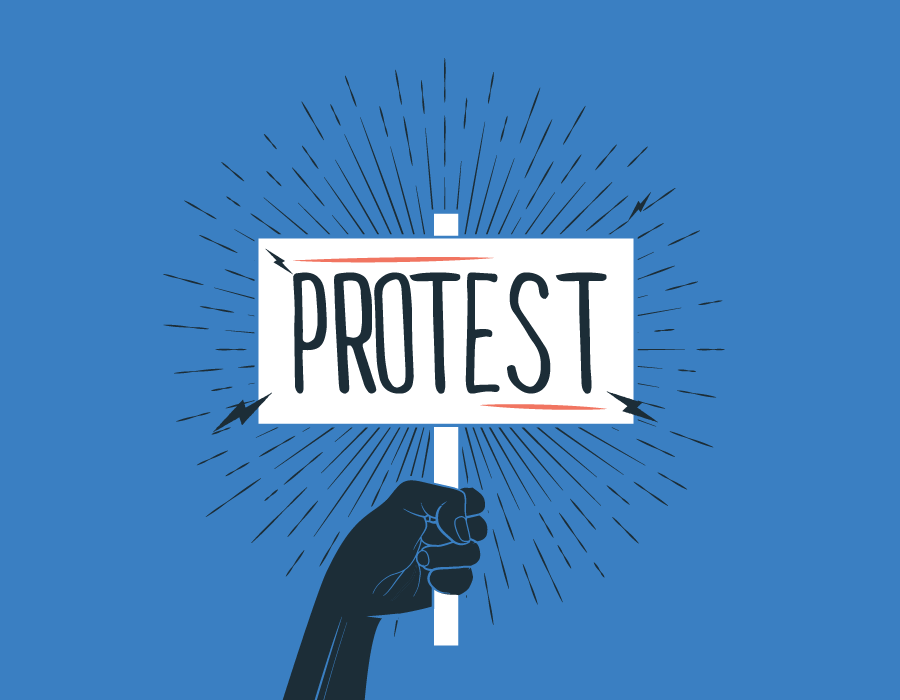
Social Justice
Definition of social justice
1: a state or doctrine of egalitarianism
Source: Merriam-Webster Dictionary
Social justice is an ideology born from the principles of fairness and respect that demands an equitable distribution of societal resources. Those resources can be access to healthcare, wealth, opportunity, education and housing, to name a few. Depending on what resources we are referring to, social justice may take a new name: racial justice, economic justice, disability justice, environmental justice and any other areas of society where inequality can occur.
In the U.S., dimensions of diversity have often been used to restrict access to societal resources through governmental laws and regulations. Some examples of this include voting regulations, which keep people away from the ballot box, to bathroom bills, which sought to restrict access to sex-segregated facilities on the basis of sex assigned at birth. These create inequality and allow societal prejudices to prevail. Other examples include businesses refusing to serve customers based on sexual orientation or students of color receiving more detention in school than their white peers.
As an organization, social justice has been at the forefront of AAUW’s work. Specifically, we have focused on the inequalities women and girls face and we’ve aimed to address governmental/regulatory issues (e.g. equal pay laws, Title IX, protections for parental leave), as well as the societal prejudices women and girls face (such as the leadership gap and barriers to the STEM fields). But gender intersects other dimensions of diversity, such as race, socioeconomic status and so on. This is why our mission is equity for all.
- Print Materials:
- Social Justice Books. A resource for educators – booklists for children and young adults
- Social Justice Book List (Goodreads)
- Social Justice Book List (NNSTOY)
- Baumann, Jason, and Edmund White. The Stonewall Reader. New York: Penguin Books, 2019.
- Gilio-Whitaker, Dina. As Long as Grass Grows: the Indigenous Fight for Environmental Justice, from Colonization to Standing Rock. Boston, MA: Beacon Press, 2020.
- Kendi, Ibram X. How to Be an Antiracist. New York: One World, 2019.
- Zinn, Howard. A People’s History of the United States: 1492-Present. London: Routledge, 2015.
- Websites:
- Videos:
- Activities:
Related
Getting Started with Difficult Conversations

Dimensions of Diversity & Identity
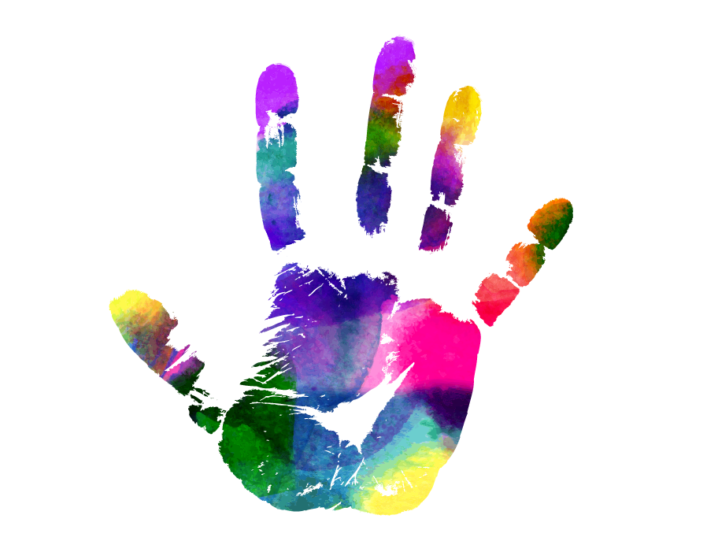
Diversity Structure & Planning
Creating and maintaining a diverse and inclusive branch takes planning, support and intention. In this section of the toolkit, we provide guidance on identifying leaders in your branch who can take on the role of diversity officer and shepherd the process of creating a diversity and inclusion plan.
